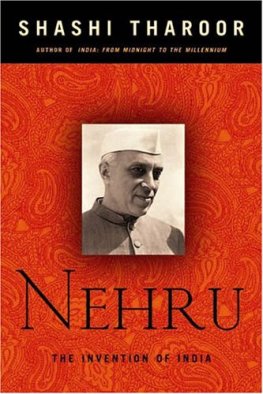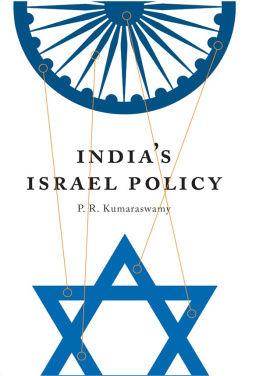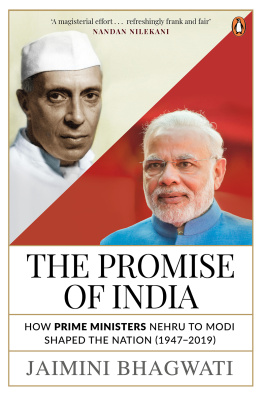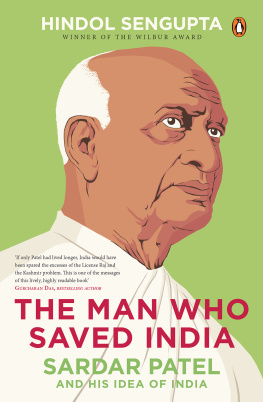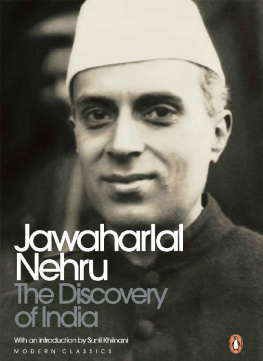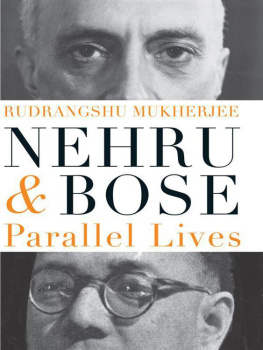Routledge Library Editions: British in India
Volume 10
Gandhi, Nehru and Modern India
First published in 1974 by Methuen Educational Ltd
This edition first published in 2017
by Routledge
2 Park Square, Milton Park, Abingdon, Oxon OX14 4RN
and by Routledge
711 Third Avenue, New York, NY 10017
Routledge is an imprint of the Taylor & Francis Group, an informa business
1974 E. M. Roberts
All rights reserved. No part of this book may be reprinted or reproduced or utilised in any form or by any electronic, mechanical, or other means, now known or hereafter invented, including photocopying and recording, or in any information storage or retrieval system, without permission in writing from the publishers.
Trademark notice: Product or corporate names may be trademarks or registered trademarks, and are used only for identification and explanation without intent to infringe.
British Library Cataloguing in Publication Data
A catalogue record for this book is available from the British Library
ISBN: 978-1-138-22929-7 (Set)
ISBN: 978-1-315-20179-5 (Set) (ebk)
ISBN: 978-1-138-24366-8 (Volume 10) (hbk)
Publishers Note
The publisher has gone to great lengths to ensure the quality of this reprint but points out that some imperfections in the original copies may be apparent.
Disclaimer
The publisher has made every effort to trace copyright holders and would welcome correspondence from those they have been unable to trace.
Gandhi, Nehru and modern India
Elizabeth Mauchline Roberts
First published 1974
by Methuen Educational Ltd
11 New Fetter Lane, London EC4
1974 by E. M. Roberts
Lumitype set and printed in Great Britain
by Butler & Tanner Ltd
Frome and London
ISBN 0 423 42300 2 (Library edition)
ISBN 0 423 42390 8 (School edition)
All rights reserved.
No part of this publication may be reproduced, stored in a retrieval system, or transmitted in any form or by any means, electronic, mechanical, photocopying, recording or otherwise without the prior permission of the publisher.
This title is available in both hardbound and paperback editions. The paperback edition is sold subject to the condition that it shall not, by way of trade or otherwise, be lent, re-sold, hired out, or otherwise circulated without the publishers prior consent, in any form of binding or cover other than that in which it is published and without a similar condition including this condition being imposed on the subsequent purchaser.
Acknowledgements
Permission to reproduce illustrations is gratefully acknowledged to Camera Press for numbers 1, 4, 26, 29, 34 and 36; the Radio Times Hulton Picture Library for numbers 2, 3, 5, 7, 8, 10, 12, 13, 15, 17, 18, 20, 23 and 28; the Paul Popper Photographic Agency for numbers 6, 9, 14, 1 6, 22, 25, 27, 30, 31, 33 and 37; the Keystone Press Agency for numbers 11, 19, 21 and 24.
1
Indian background
Introduction
This book is an account of twentieth-century India. It describes Indias struggle for independence from British rule and the achievement of that independence in 1947 with the accompanying partition of India. It examines some of the political, social and economic problems facing India and the possible solutions to these problems. No book about these topics could be complete without an account of the lives and work of the two men who have done so much to fashion contemporary India: Gandhi and Nehru.
India is a land of enormous diversity and complexity. It is a very large country (the seventh largest in the world), having an area of 1 138 814 square miles (which is about twenty times the size of England and Wales). It is 2000 miles from the north to the south of India and about 1800 miles from east to west at its widest point.
The races of India
The visitor to India notices how different from each other the Indian people are. They wear a great variety of costumes. Hindu women (see ). This is an all-enveloping garment from head to toe with only two eye holes. Men wear tight or baggy trousers (we have taken the words jodhpurs and pyjamas from Indian words), or a kind of draped skirt of any length called a dhoti. With any of these they can wear a long upper garment like a night shirt, or a tight-fitting coat reaching to the knees, or just nothing at all. Many men of course wear western clothes.
There is a great variety of races in India. Many Indians especially in the northern and central areas are descended from the Aryan invaders who came to India from Asia from about 1 500 BC onwards. Their descendants have paler skins than southern Indians and also tend to be taller. The Aryans conquered and drove the Dravidans, the original inhabitants of India, into the south.
In the remote areas of India there are some tribes numbering about 30 million people who live in Stone Age conditions. Some are Aborigine descendants of the first inhabitants of India. One primitive group is the Uralis of Kerala, who hunt with bows and arrows and who live in tree tops. In the north-east there are many Mongoloid people with yellow skins and slanting eyes.
Indians are even less united linguistically than they are racially. There are fifteen main languages and at least 850 different dialects and subsidiary languages of which 225 are distinct languages. All these different languages belong to four distinct groups. The northern languages are derived from the ancient language Sanskrit. In this group the most important is Hindi, Indias official language and spoken by nearly 50 per cent of the population. Then there are

1 This village schoolmaster is wearing a dhoti and his wife is wearing a sari
the southern languages, the languages of the north-east, and a small group of Aborigine languages.
If four Indians speaking a language from each of these four groups met together and each spoke only his own language, they would be as mutually incomprehensible as a Japanese, a Russian, an Arab and an Englishman speaking together.
The religions of India
The religion of the great majority of Indians is Hinduism. It developed in a long period from about 1 500 bc to 500 bc. It did not develop from the teachings of one prophet but gradually evolved out of Indian life.
Hinduism is a very flexible religion and does not have the rigid beliefs of, for example, Christianity. The basic belief of Hindus is the oneness of creation. God is everywhere, in everything and in everyone. The devout Hindus aim is to achieve mystical union with God. But the Hindu also believes that there are many ways of achieving union with God and therefore different religions are but different ways of reaching the same destination. This belief makes Hindus tolerant both of other religions and of the greatest diversity of belief in Hinduism itself. Some Hindus worship one God, others believe that there is one God but that he has many forms and that each has a separate name and identity.


